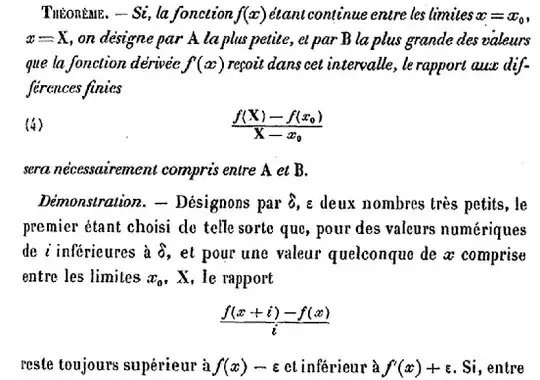Thanks to H. M. Šiljak for finding the 1983 Amer. Math. Monthly
paper by Judith Grabiner, which I feel settles the question (at least for $\epsilon$).
Here is a longer quote encompassing that which H.M. excerpted:
Mathematicians are used to taking the rigorous foundations of the calculus as a
completed whole. What I have tried to do as a historian is to reveal what went into
making up that great achievement. This needs to be done, because completed wholes by
their nature do not reveal the separate strands that go into weaving them—especially
when the strands have been considerably transformed. In Cauchy's work, though, one
trace indeed was left of the origin of rigorous calculus in approximations—the letter
epsilon. The $\epsilon$ corresponds to the initial letter in the word "erreur" (or "error"), and
Cauchy in fact used $\epsilon$ for "error" in some of his work on probability [31]. It is both
amusing and historically appropriate that the "$\epsilon$," once used to designate the "error" in
approximations, has become transformed into the characteristic symbol of precision
and rigor in the calculus. As Cauchy transformed the algebra of inequalities from a tool
of approximation to a tool of rigor, so he transformed the calculus from a powerful
method of generating results to the rigorous subject we know today.
[31] Cauchy, Sur la plus grande erreur à craindre dans un résultat moyen, et sur le
système de facteurs qui rend cette plus grande erreur un minimum, Comptes rendus
37, 1853; in Oeuvres, series 1, vol. 12, pp. 114–124.
A further finding by H. M. Šiljak (linked in a comment above),
verifying that Cauchy did indeed use both $\epsilon$ and $\delta$:



